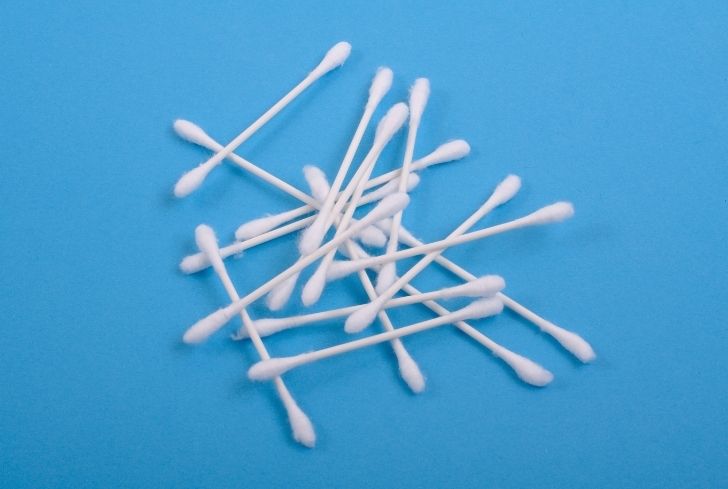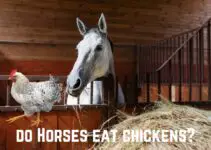Eating breakfast in bed. Having a warm bath. Taking a sip of coffee in the morning. Now, all these have one thing in common. They all are simple joys of life. Even so, we still have one that beats them all – petting a dog.
Almost every pet parent will tell you this – their furry friend is among the best things life has offered them. It’s fun. It’s amazing. But it also brings along its own set of fears. A case in point is that of eating things they shouldn’t. Pups eat and eat. They eat just about anything nature presents.
It happened. Your canine just ate a Q-Tip. It’s the first time they did it. You are worried. What should you do? Could it harm them? Well, we’ll be answering all these and more. Just take a walk with us!
Contents
What Should You Do If Your Dog Ate a Q-Tip?
If your dog ate a Q-tip, figure out the type of the Q-tip and what it contained. Also, keep a close eye on the behavior of your dog. When you notice anything unusual, such as pain, lethargy, or any other sign, it’s best to visit the vet to help find the way forward.
So yes, you will need to ask yourself these three questions;
- What type of Q-tip did my dog eat?
- What was on the Q-tip My Dog Ate?
- Is There Any Unusual Behavior In The Dog?
What Type of Q-Tip Did My Dog Eat?
Q-tips are of different types. But they all have two parts – the applicator (plastic handle) and cotton buds on either side. While the cotton is digestible, the plastic handle isn’t.
The buds can also be rayon, polyester, foam, or flocked. Now, neither of these materials is good for pets. So, if by any chance your adorable Fido took any of these swabs, contact the vet straight away.
Cotton, however, is the most common material used for Q-tips. In fact, if your dog ate a Q-tip, it likely had cotton buds. Cotton is natural and digestible. Hence, unlike other types, it won’t cause any issues to your canine.
Even so, there’s still a reason to get worried when your dog eats cotton Q-tips. All that depends on what was on the swabs. And yes, that ushers us into the next question you need to ask yourself.
What Was on the Q-Tip My Dog Ate?
Q-tips are small. However, we all agree their usefulness isn’t as small. They suffice in a variety of jobs in the house. Whether we want to apply glue, nail polish, nail remover, or even some household chemicals, we more often than not turn to Q-tips.
The Q-tip itself will sometimes not cause any issues in your dog. However, the content on it can be dangerous for pets. With that said, what the Q-tip contained is among the first things you have to figure out!
Any glue isn’t good for your canine. It poses the risk of damaging the small intestines. That means you can’t afford to sit back and wait for your dog to exhibit unusual signs before you can call the vet.
About nail polish, small concentrations usually won’t cause anything serious. The same applies to nail remover. But again, keep monitoring your dog just in case they show any signs . If you notice any, let the dog doctor know immediately.
Speaking of household chemicals, say hydrogen peroxide or bleach, it depends on the amount. Tiny intakes won’t cause side effects to your adorable pup. But that’s not the case for large amounts. They will bring about nausea and vomiting. So again, you have to work with a professional.
Is There Any Unusual Behavior in the Dog?
Any unusual behavior in dogs after eating Q-tip should be a cause for concern. Be vigilant to notice even the slightest changes in your dog’s behavior. It’s worth informing your vet even of the slightest signs and behavioral changes.
Where there aren’t any signs, there isn’t much to make you worry. But again, it’s best to monitor your canine very closely in case of anything. Sometimes it will take a while before the side effects manifest.
Does the Size of Your Dog Matter?
Yes, the size of your dog matters a lot. That’s why most vets will want to know the size of your canine after you call them. You definitely can’t compare a 20-lb canine to a large dog breed weighing 80 lbs. or so, for instance, the German shepherd.
A swab on itself may not cause any harm to large dog breeds. Actually, upon hearing that it’s a large breed, the dog doctor may tell you not to worry about it. The far they may go is to ask you to call them if anything serious comes about.
However, that’s not how they’ll react after they hear that the ingestion involves a small dog. For Yorkies, Chihuahuas, Pomeranians, and other smaller breeds, the doctor will take it with more weight. They may ask for any signs. If there isn’t, they’ll tell you to keep monitoring the pet and perhaps insist on doing it.
Large pups have wider guts. As such, they are less likely to develop any issues after they eat something like Q-tip. But that’s not the case for the smaller furry buddies. They have narrower guts that put them at the risk of developing issues from swallowing Q-tips.
Again, small canines are more susceptible to toxicity than larger ones. An amount of chemical that won’t cause issues in a GSD can even kill a Chihuahua. So yes, the size of your canine will matter a lot after they eat Q-tips.
What Happens If a Dog Eats a Q-Tip?
We don’t have one common consequence for all dogs after they eat a Q-tip. It varies from one canine to another. Some won’t experience anything negative at all. However, for others, it can turn life-threatening.
If there are any consequences, they can range from mild to severe. And much more like the action to take, the magnitude of the condition will depend on the type of Q-tip, the substance on it, and the size of the dog.
So, what are the potential consequences of your dog eating a Q-tip? Well, we will be looking at these dangers shortly. But before we get there, let’s see what you should do if your dog doesn’t exhibit any side effects.
Now, assuming that you don’t see any reaction in your dog, that doesn’t mean they are 100% safe. Q-tips aren’t for eating. They are foreign and remain dangerous when in the body.
Hence, find a strategy to shorten the time a Q-tip spends in the dog’s gut. A high-fiber diet such as canned pumpkins will do. Canned pumpkins are generally healthy and contain high soluble fiber to add bulk to your dog’s stool.
But again, you have to pay attention to the pumpkin you buy for your dog. Avoid pumpkin pie mix that may contain Xylitol and other substances that could bring your pet a set of other health issues.
Dangers of Your Dog Eating a Q-Tip
You see, when your dog eats a cotton Q-tip, it comes along with two risks. First, the indigestible applicator could cause intestinal blockage or puncture along the alimentary canal. Second, the chemicals on the swab (if any) can cause your dog a plethora of digestive issues.
Intestinal blockage and puncture are more likely in smaller canines than larger ones. As we said, those little furry friends have narrower digestive tracts than the larger breeds. I mean, GSD and Chihuahua don’t face an equal amount of risk of getting intestinal blockage when they eat a Q-tip.
You can also consider offering your canine more bland foods. Foods like rice and boiled meat will help encapsulate the Q-tip when passing through the digestive tract. That way, there will be low chances of it causing intestinal injuries.
Dangers can also come from the actions you take once your dog eats a Q-tip. For instance, you should never induce your dog to vomit something like a Q-tip. It looks like a good idea, but it can be dangerous for your canine.
When you make your dog vomit, you expose your dog’s gut to puncture. Keep in mind that your dog’s digestive tract is very delicate. As such, even the little things like Q-tips pose a grave danger.
Symptoms To Look For After Your Dog Eats a Q-Tip
After your dog eats a Q-tip, there isn’t much you can do. However, you should monitor your pet closely for any signs.
Some of the signs include;
- Lethargy
- Anorexia (loss of appetite)
- Diarrhea
- Constipation
- Vomiting
- Abdominal swelling
- Abdominal pain
Generally, most of the signs your dog will exhibit are basically the symptoms of intestinal obstruction and toxicity. The symptoms may show up hours after ingestion, but they can also take days. Most vets recommend that you monitor your canine for about 3 days.
If you notice any of the signs, it’s best to reach the vet. The professional will provide you with the best advice for your fur baby. With proper treatment, your dog will eventually get over it.
How To Prevent Your Dog From Eating Q-Tips?
While it’s likely that your dog will be fine after eating Q-tips, prevention remains the best medicine. It’s possible for your canine to re-ingest Q-tips again, so always make sure that you keep them far from your dog’s reach.
You can opt to keep your Q-tips on raised surfaces. You can also opt for places your dog isn’t likely to access, for instance, the bathroom. But again, dogs can be sneaky, so you should always keep Q-tips in a secure place.
Again, consider getting a dog-proof trash bin. True, your dog may act well-behaved when you’re around but differently when alone, especially if your pup suffers from separation anxiety.
Final Verdict
After your dog eats a Q-tip, it’s not possible to tell the exact thing that will happen next. A Q-tip can cause a few issues in the digestive system. Nevertheless, that’s very unlikely unless we are talking about a small canine. Monitor your furry friend for any possible side effects and seek the vet’s attention as soon as you notice any.







